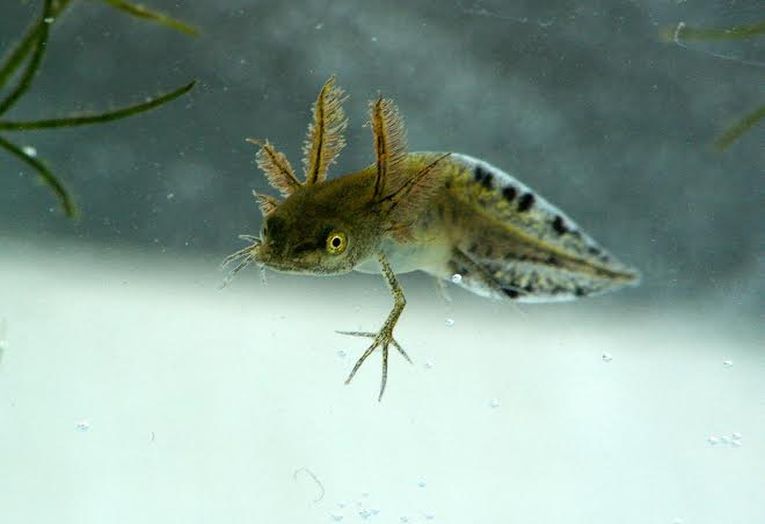A pioneering new survey technique that analyses DNA traces in water is set to revolutionise the monitoring of great crested newts across the UK.
Research led by the Freshwater Habitats Trust together with Amphibian and Reptile Conservation, University of Kent and genetics company SpyGen shows that the new method allows researchers to determine quickly and easily whether newts are present in ponds and streams.
The Defra-funded research project has discovered that monitoring levels of environmental DNA (eDNA) in water makes it at least 10 times faster to detect species than was previously possible - and has wide implications for conservation of endangered and rare aquatic animals.
Great crested newts have suffered a major decline in the last century and although they have protection under UK and European law, their numbers continue to fall. A shortage of suitable breeding and resting places, and deterioration of existing habitats, is a major cause for this decline. 50% of the UK's ponds were lost during the 20th century, and of those that remain 80% are in a poor state.
The new research methods offer fresh hope to the great crested newt, allowing more sites to be checked for newts and providing essential information for effective conservation and land-use planning. As the testing process is simple and fast, volunteers need just basic training - meaning that anyone across the country can become involved and help to build up a comprehensive picture of the behaviour and distribution of these amphibians.
"Previously it has been impossible to determine whether the great crested newt population was going up or down because it was just too time-consuming and expensive to visit enough sites to get a reliable national or regional picture," says Dr Jeremy Biggs, project leader and Director of Freshwater Habitats Trust.
"Now that we've shown a single water sample can detect the newts with remarkable reliability, it makes large scale surveys practical - which will help enormously with future protection of Great Crested Newts."
Before the research could be conducted, a 'primer' - an artificial length of DNA that exactly matches the DNA of the great crested newt - was developed, and then tested to ensure that it only detected newts.
Water samples were then collected by volunteers from 250 ponds known to be inhabited by great crested newts. The samples were analysed for traces of eDNA - released from plants and animals from their skin, faeces, mucus, hair, eggs and sperm, or when they die. The eDNA techniques correctly detected newts in 91% of the ponds - a far more accurate and effective result than traditional methods, which include counting newts by torchlight, bottle trapping and searching for eggs.
But it's not just newts that will benefit. There is potential for eDNA analysis to be used to gather vital information about other endangered aquatic species, including freshwater fish, amphibians and invertebrates.
Freshwater pearl mussels are one such species. Numbers of this remarkable mollusc have declined dramatically in the past 60 years - and they are even facing extinction in some parts of England and Wales. They can live for over 100 years, and are extremely sensitive to pollution - more so than any other freshwater animal - making them an important indicator of river water quality.
Freshwater and wetlands are amongst the most threatened habitats in the natural world. Groundbreaking research such as eDNA analysis and practical conservation work such as the Freshwater Habitats Trust's Million Ponds Project - which aims to create a network of new ponds across the UK, reversing a century of pond loss - are vital for protecting these fragile, vulnerable environments and the species they support.










